本文转自《QUARTZ》发表的题为“The ultimate guide to negative-emission technologies”的报道。
作者:Akshat Rathi
日期:2018.10.08
原文链接:https://qz.com/1416481/the-ultimate-guide-to-negative-emission-technologies/
The world has delayed reducing carbon emissions for so long that humanity will need to suck enormous amounts of carbon dioxide back out from the air to avoid catastrophic global warming. That’s one of the conclusions of a new report published by the Intergovernmental Panel on Climate Change.
世界已经推迟了减少碳排放的时间,人类将需要从空气中吸收大量的二氧化碳,以避免灾难性的全球变暖。 这是政府间气候变化专门委员会发布的新报告的结论之一。
Earlier this year, Environmental Research Letters published three studies reviewing the need for negative emissions and laying out the state of development for the technologies that can help us achieve them. Quartz has synthesized those reports to help you understand the technologies that may be required to capture as much as 20 billion metric tons each year to prevent catastrophic climate change.
今年早些时候,《环境研究快报》发表了三项研究,回顾了负排放的必要性,并阐述了可以帮助我们实现这些技术的技术的发展状况。 Quartz综合了这些报告,帮助您了解每年捕获高达200亿公吨二氧化碳可能需要的技术,以防止灾难性的气候变化。
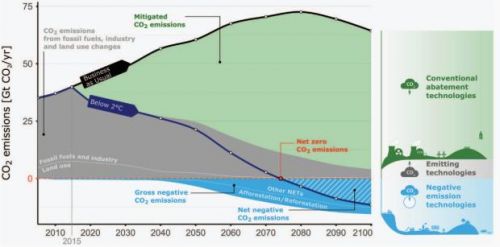
To be sure, as the chart above shows, the deployment of negative-emissions technologies has to be alongside zero-carbon technologies that displace the use of fossil fuels or abate their emissions. In other words, we will also need more solar, more wind, more nuclear, along with the deployment of more batteries, electric cars, and carbon capture and storage for industries, such as cement, steel, and ethanol.
可以肯定的是,正如上图所示,负排放技术的部署必须与零碳技术并存,取代化石燃料的使用或减少其排放。 换句话说,我们还需要更多的太阳能,更多的风能,更多的核能,以及更多电池,电动汽车以及水泥,钢铁和乙醇等工业的碳捕获和储存。
1. Afforestation and reforestation
1. 造林和再造林
Annual capture potential: between 0.5 and 3.6 billion metric tons. Current estimated cost of capture: between $5 to $50 per metric ton.
年捕获潜力:5至36亿公吨。 目前估计的捕获成本:每公吨5至50美元。
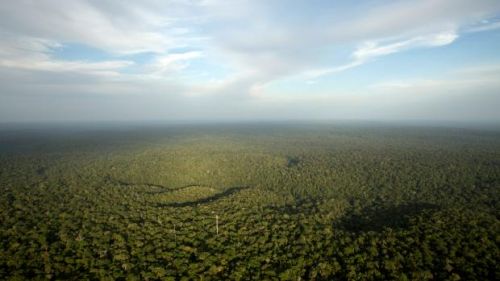
A carbon sink.
碳汇
It’s a “mature technology” and is the simplest to understand: Just plant more trees, and replace the ones that have been cut down. The downside: just planting trees is not enough, as the annual capture potential is lower than what’s needed.
这是一种“成熟技术”,最容易理解:只需种植更多的树木,并替换已砍伐的树木。 缺点:仅仅种植树木是不够的,因为每年的捕获潜力低于所需的。
Trees need a lot of land and soil (along with a supporting climate) to grow optimally, and it’s not clear that we have enough to support a massive effort to plant more. There are other problems: Converting large pieces of arid land into forests will reduce the amount of light and heat that is currently reflected back into space, known as the “albedo effect,” which reduces the carbon-cutting effect of new forests. And, finally, forests only store carbon dioxide for decades to centuries at most. That’s a blink of an eye compared to geological formations that can store carbon for thousands or even millions of years.
树木需要大量的土地和土壤(以及适宜的气候)才能最佳地生长,而且我们还不足以支持大量种植更多植物。 还有其他问题:将大块干旱土地转变为森林将减少目前反射回太空的光和热量,称为“反照率效应”,这会降低新森林的碳减排效果。 最后,森林最多只储存二氧化碳数十年到数百年,与可以储存碳数千年甚至数百万年的地质构造相比,这是一眨眼的功夫。
2. Bioenergy with carbon capture and storage (BECCS)
2. 碳捕获和储存的生物能源(BECCS)
Annual capture potential: between 0.5 and 5 billion metric tons. Current estimated cost of capture: between $100 and $200 per metric ton.
年捕获潜力:5至50亿公吨。 目前估计的捕获成本:每公吨100至200美元。
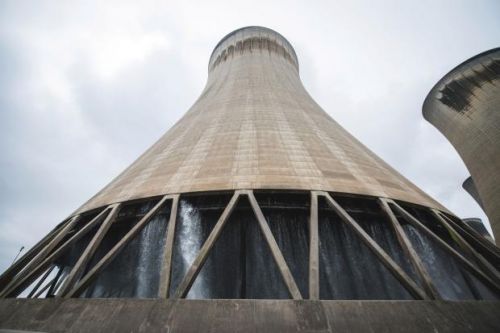
The cooling tower of the UK’s largest power plant, which is trialing BECCS.
英国最大的发电厂的冷却塔,正在试验BECCS。
This technology combines two separate innovations. Carbon capture and storage (CCS) injects CO2 deep underground, where it’s stored in rock foundations—essentially like extracting natural gas but in reverse. Some 19 plants around the world have store approximately 40 million metric tons underground each year. Most climate scenarios require carbon capture to mitigate emissions from power plants and industry.
该技术结合了两项独立的创新。 碳捕集与封存(CCS)将二氧化碳注入地下深处,储存在岩石地层中 - 基本上就像提取天然气一样,但是是相反的过程。 全球约有19家工厂每年在地下储存约4000万吨。 大多数气候情景需要碳捕获来减少发电厂和工业的排放。
Bioenergy is the use of biomass to generate heat and power. In theory, burning wood is considered carbon neutral because it is only releasing carbon dioxide that was captured in the first place when the plant was growing. If CCS is used to store those emissions underground, then the total emissions from the process would arguably be negative.
生物能源是利用生物质来产生热量和能量。 从理论上讲,燃烧木材被认为是碳中性的,因为它只释放出植物生长时首先捕获的二氧化碳。 如果使用CCS将这些排放物储存在地下,则该过程的总排放量可能会为负值。
The trouble is that scientists aren’t yet sure if biomass can always be considered carbon neutral. As Quartz previously explained, “The carbon dioxide released by burning trees, some experts say, is not recaptured back by new trees for many years. In that period, the greenhouse gases released will have contributed to heating up the planet—a process that cannot be negated by the new trees. In addition, felling a tree tends to release carbon that’s been trapped by the soil surrounding the plant.”
问题是科学家还不确定生物质是否总能被认为是碳中性的。 正如Quartz之前所解释的那样,“一些专家说,燃烧树木释放的二氧化碳多年来都没有被新树重新夺回。 在那个时期,释放的温室气体将有助于地球的升温 - 一个新树木无法否定的过程。 此外,砍伐一棵树往往会释放出被植物周围土壤所困的碳。“
There are also concerns that, if we rely on using the technology for all negative emissions, we may not have enough land to grow the trees needed to be burned. That may even push against the world’s need to keep feeding a growing population. Finally, though we know there is enough potential to store carbon dioxide underground, the types of rocks and regions needed are not evenly spread out. That means, to make BECCS work, we will need to also build infrastructure to move carbon dioxide from where it is produced to where it can be stored.
还有人担心,如果我们依靠这项技术来处理所有负面排放,我们可能没有足够的土地来种植需要燃烧的树木。 这甚至可能会推动全世界继续为不断增长的人口提供食物的需求。 最后,虽然我们知道有足够的潜力将二氧化碳储存在地下,但所需的岩石和区域类型并不均匀分布。 这意味着,为了使BECCS发挥作用,我们还需要建立基础设施,将二氧化碳从生产地转移到可以储存的地方。
3. Direct air capture
3. 直接空中捕获
Annual capture potential: between 0.5 and 5 billion metric tons. Current estimated cost of capture: between $200 and $600 per metric ton.
年捕获潜力:5至50亿公吨。 目前估计的捕获成本:每公吨200至600美元。
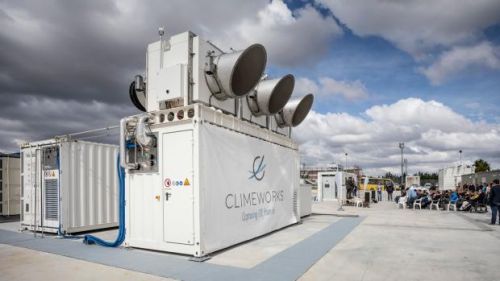
Climeworks’ direct air capture plant in Troia, Italy opened on Oct. 1, 2018.
Climeworks在意大利Troia的直接空气捕获工厂,于2018年10月1日开业。
Direct air capture takes BECCS one step further. The idea is to directly suck carbon dioxide out of the air and store it underground. There are currently three startups in the world that have working technologies, but the costs are so high that the startups have only built demonstration projects so far.
直接空中捕获使BECCS更进一步。 我们的想法是直接从空气中吸入二氧化碳并将其储存在地下。 目前世界上有三家拥有工作技术的初创公司,但成本太高,以至于初创公司到目前为止只建立了示范项目。
Climeworks, a Swiss startup, estimates its costs are between $600 and $800 per metric ton of CO2 captured. Carbon Engineering, a Canadian startup, puts it at closer to $250 per metric ton. In either case, the cost is many times the cost of CCS applied on coal or biomass power plants.
瑞士创业公司Climeworks估计,每公吨二氧化碳捕获成本在600美元到800美元之间。 加拿大一家初创公司Carbon Engineering表示每公吨价格接近250美元。 在任何一种情况下,成本都是应用于煤炭或生物质发电厂的CCS成本的数倍。
But the technology has the advantage that it doesn’t need to be located where the CO2 is produced. Instead, it could be placed where the CO2 is to be injected.
但该技术的优势在于它不需要位于产生二氧化碳的地方。 相反,它可以放置在注入二氧化碳的地方。
4. Soil carbon
4. 土壤碳
Annual capture potential: up to 5 billion metric tons. Current estimated cost of capture: between $0 and $100 per metric ton.
年捕获潜力:高达50亿公吨。 目前估计的捕获成本:每公吨0至100美元。
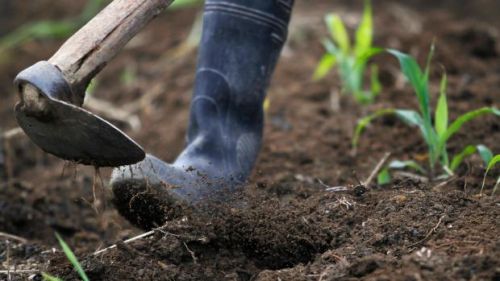
A worker turns soil containing biochar in a corn field at the Villa Carmen Biological Station in Pilcopata, Cusco.
库斯科Pilcopata的Villa Carmen生物站,一名工人在玉米田里翻含有生物碳的土壤。
The amount of carbon contained in the soil is a balance between carbon inputs—litter, residue, roots, manure, etc.—and carbon outputs—respiration or soil disturbance. To increase the amount of soil carbon, inputs need to do be more than outputs.
土壤中含有的碳量是碳输入 - 枯枝落叶,残留物,根系,粪便等 - 和碳输出 - 呼吸或土壤干扰之间的平衡。 为了增加土壤碳含量,投入必须大于产出。
The methods of achieving the goal vary, including adding manure, decreasing soil disturbance, grazing optimization, and the planting of legumes among many others. Each of the techniques is designed to help add more carbon to the soil.
实现目标的方法各不相同,包括添加粪肥,减少土壤干扰,放牧优化以及豆类种植等。 每种技术都旨在帮助向土壤中添加更多的碳。
The challenge: As soils are enriched in carbon, it gets progressively harder to add more carbon, and the process becomes more expensive. There are also concerns of that the amount of carbon stored in any particular year may not always remain stable in the soil.
挑战:由于土壤富含碳,越来越难以添加更多的碳,而且过程变得更加昂贵。 还有人担心,任何特定年份储存的碳量可能并不总是在土壤中保持稳定。
That said, the researchers note that soil carbon has been managed for millennia (knowingly or unknowingly), because the upshot is improved agricultural production. Thus there is intimate knowledge among farmers in different regions of the world. Better still, the technology could be deployed today, and the monitoring needed to ensure soil carbons stay there can catch up later.
也就是说,研究人员指出,土壤碳已被管理了数千年(有意或无意),因为结果是改善了农业生产。 因此,世界不同地区的农民之间有着密切的了解。 更好的是,该技术可以在今天部署,并且确保土壤碳保持在那里所需的监测可以在以后赶上。
5. Biochar
5.生物碳
Annual capture potential: between 0.5 and 2 billion metric tons. Current estimated cost of capture: between $90 and $120 per metric ton.
年捕获潜力:5至20亿公吨。 目前估计的捕获成本:每公吨90至120美元。
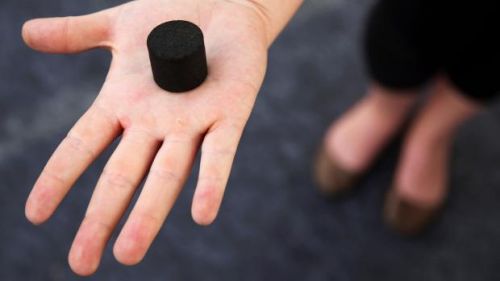
Biochar, a charcoal-like product made from human waste, used as cooking fuel or fertilizer, shown in an exhibition in New Delhi, India.
生物碳,一种由人类废物制成的炭状产品,用作烹饪燃料或肥料,在印度新德里的展览中展示。
Biochar is created by the thermal degradation of biomass, usually wood, in the absence of oxygen. When added to soil, it has the ability to increase the amount of soil carbon—more than what can be achieved through conventional means. Beyond storing carbon, the use of biochar leads to greater retention of water in soils and reduction in methane and nitrogen emissions.
生物碳是在没有氧气的情况下通过生物质(通常是木材)的热降解产生的。 当添加到土壤中时,它具有增加土壤碳量的能力 - 超过通过常规手段可以实现的量。 除了储存碳外,生物炭的使用还可以更好地保留土壤中的水分,减少甲烷和氮的排放。
The difficulty with this technology is that so far most studies have only been done on a small scale. Additionally, if it does scale up, it will consume vast amounts of wood, which, if not harvested sustainably, could have other impacts on the climate.
这项技术的难点在于,到目前为止,大多数研究只是在小范围内进行。 此外,如果它扩大规模,它将消耗大量的木材,如果不进行可持续采伐,可能会对气候产生其他影响。
6. Enhanced weathering
6. 增强风化
Annual capture potential: between 2 and 4 billion metric tons. Current estimated cost of capture: between $50 and $200 per metric ton.
年捕获潜力:20至40亿公吨。 目前估计的捕获成本:每公吨50至200美元。
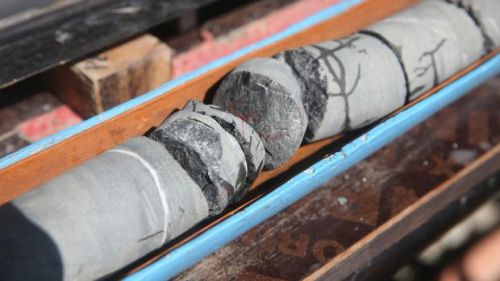
In Oman, scientists collect samples from one of the world’s only exposed sections of the Earth’s mantle to uncover how a spontaneous natural process millions of years ago transformed CO2 into limestone and marble.
在阿曼,科学家们从世界上唯一暴露的地幔部分中收集样本,以揭示数百万年前自然自然过程如何将二氧化碳转化为石灰石和大理石。
Some minerals have the ability to react with and capture carbon dioxide, as the natural forces cause the rock to break apart and expose unreacted parts. Enhanced weathering accelerates that process by grinding the rock and then spreading it on a piece of land to increase its exposure to the atmosphere. As a side effect, the alkalinity (opposite of acidity) of weathered rocks can also help improve soil quality.
一些矿物质具有与二氧化碳反应并捕获二氧化碳的能力,因为天然力导致岩石破裂并暴露未反应的部分。 通过研磨岩石然后将其铺展在一块土地上以增加其暴露在大气中,增强的风化加速了这一过程。 作为副作用,风化岩石的碱度(与酸度相反)也有助于改善土壤质量。
In Oman, for example, peridotite exists in vast quantities. When exposed to air, it reacts and forms carbonate minerals that can be seen as white-colored veins in rocks. It is estimated that the region could help store as much as 1 billion metric tons of carbon dioxide each year.
例如,在阿曼,橄榄岩大量存在。 当暴露在空气中时,它会反应并形成碳酸盐矿物质,可以看作是岩石中的白色静脉。 据估计,该地区每年可以帮助储存多达10亿公吨的二氧化碳。
As with biochar, there aren’t large-scale studies of enhanced weathering’s impact on geochemical cycles and on the biomass and carbon stocks in the soil and in plants. The cost is also highly dependent on where the rocks are mined, and where and how they are crushed and spread.
与生物炭一样,没有大规模的研究表明增强的风化对地球化学循环以及土壤和植物中的生物量和碳储量的影响。 成本也高度依赖于岩石的开采地点,以及它们在何处以及如何被压碎和扩散。